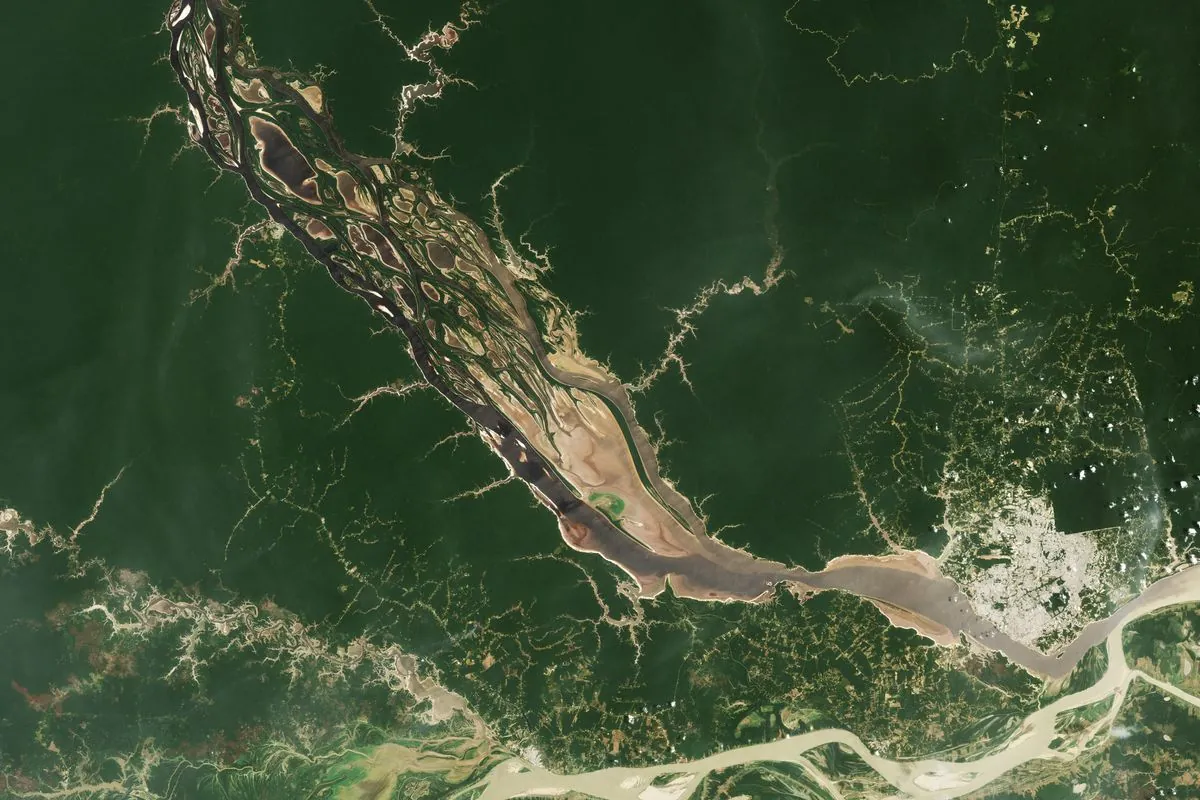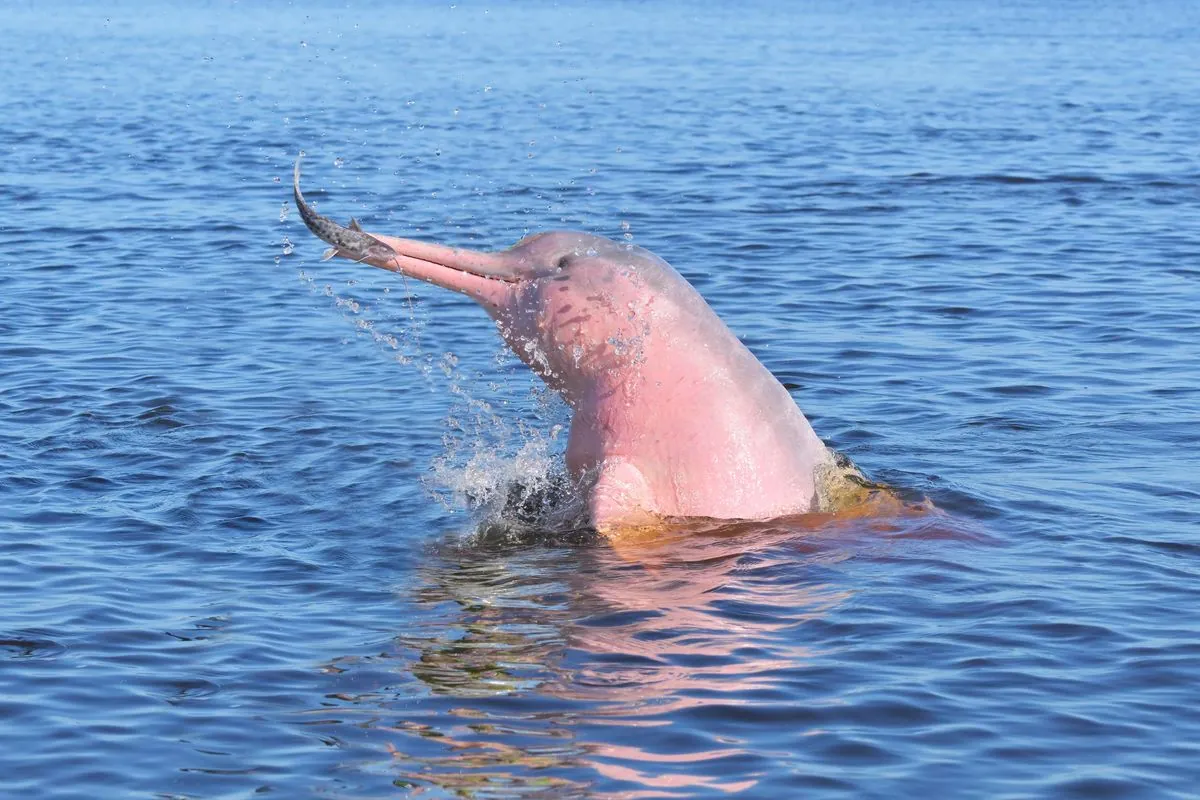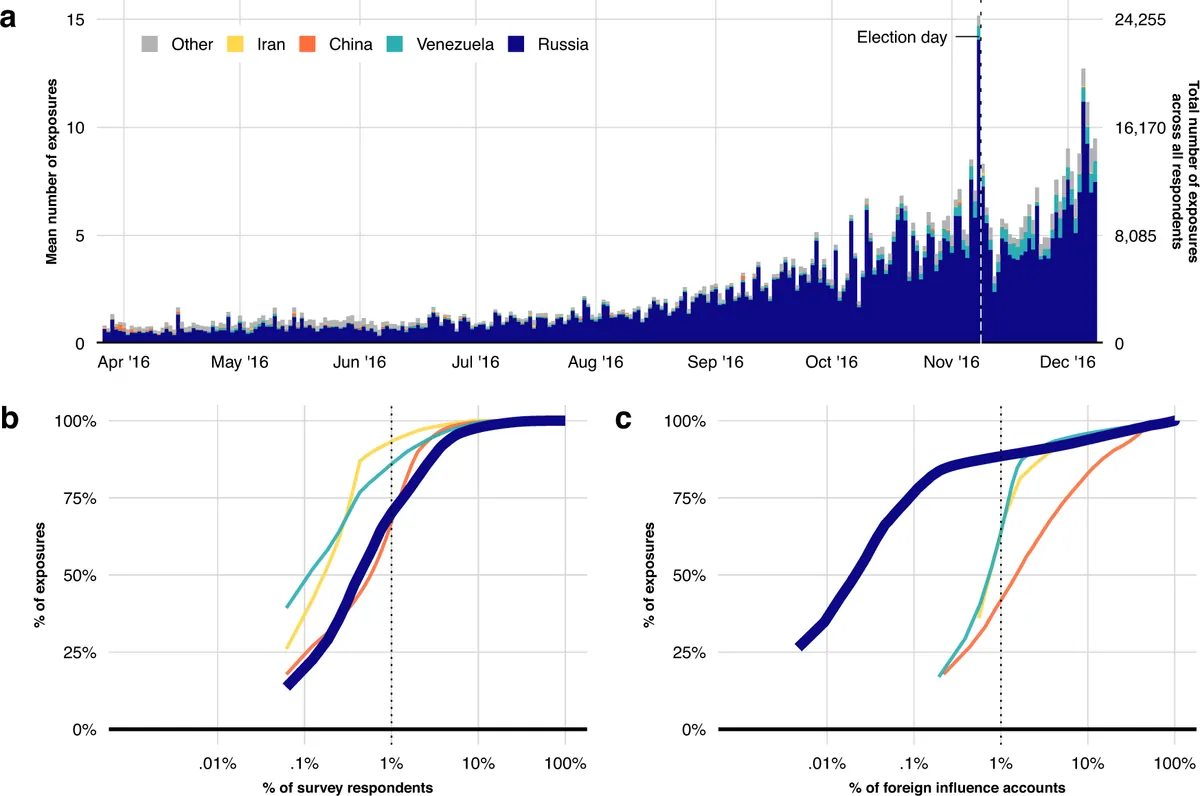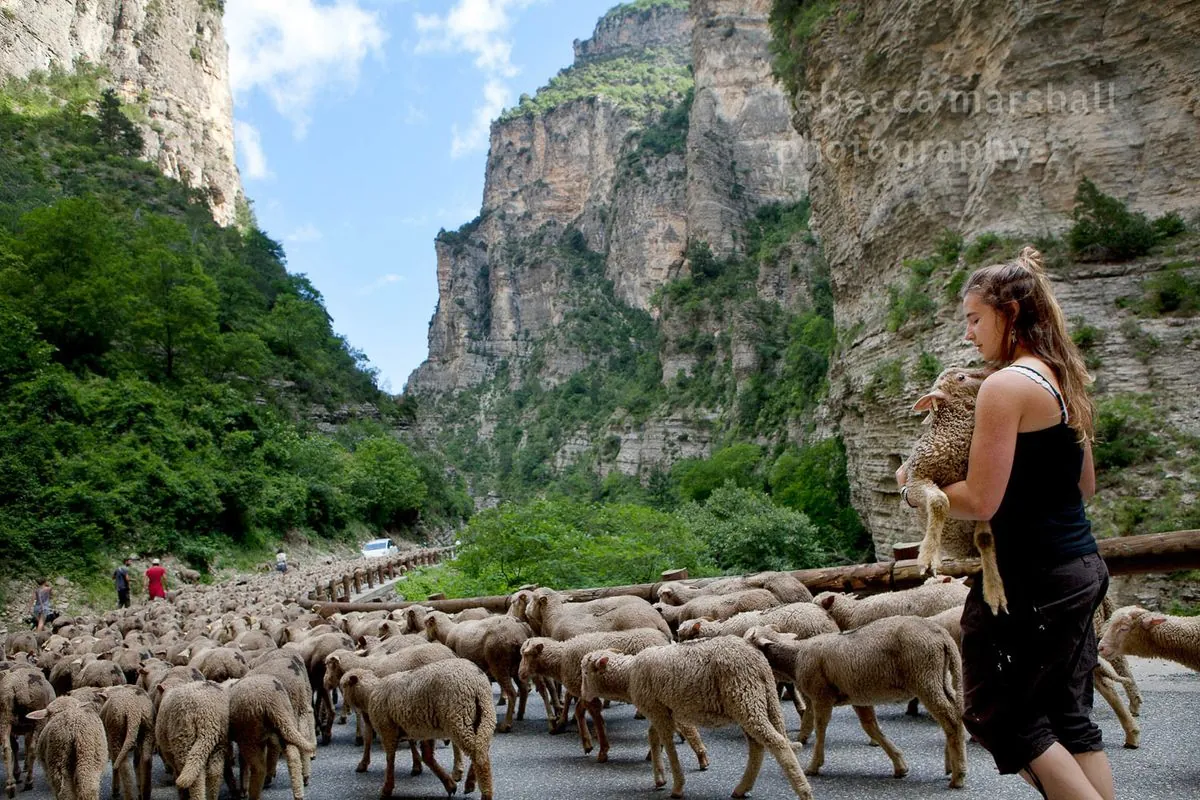Amazon Tributary Hits 122-Year Low Amid Severe Drought
The Negro River, a major Amazon tributary, has reached its lowest level in over a century due to severe drought. This environmental crisis affects the entire Amazon basin, raising concerns about long-term impacts.

In a stark illustration of the ongoing environmental crisis in Brazil, the Negro River, a primary tributary of the Amazon, has plummeted to its lowest level in 122 years. This unprecedented drop, recorded on September 29, 2024, at the port of Manaus, underscores the severity of the drought afflicting the Amazon rainforest and other regions of Brazil.
Andre Martinelli, hydrology manager at Brazil's geological service in Manaus, reported that the river's water level stood at a mere 12.66 meters, a significant deviation from its typical 21-meter mark. This alarming statistic surpasses the previous record low set in late October 2023, highlighting the intensifying nature of the drought.
The Negro River, the world's largest blackwater river, plays a crucial role in the Amazon ecosystem. It drains approximately 10% of the Amazon basin, which covers about 40% of South America. The river's importance extends beyond its impressive statistics; it is home to unique species such as the Amazon river dolphin, also known as the pink dolphin.

The drought's impact is not limited to the Negro River. All major waterways in the Amazon basin are experiencing critical water levels, including the Madeira River, the Amazon's longest tributary. This widespread water scarcity poses significant challenges for the region's biodiversity and the over 30 million people who call the Amazon basin home.
Manaus, the largest city in the rainforest with a population exceeding 2 million, sits at the confluence of the Negro and Amazon rivers. This location, known as the Meeting of Waters, is typically a major tourist attraction. However, the current low water levels are likely to affect both tourism and local livelihoods dependent on the rivers.
The Amazon rainforest, often referred to as the "lungs of the Earth," produces about 20% of the planet's oxygen. It is home to over 400 billion trees belonging to 16,000 species and more than 40,000 plant species. The basin contains one-fifth of the world's freshwater, making the current drought particularly concerning.
Climate experts warn that this situation could worsen. Forecasts predict continued low rainfall in upstream regions, suggesting the Negro River's water level might drop even further by the end of October 2024. This trend aligns with broader climate change projections, which indicate that 30-60% of the Amazon rainforest could transform into savanna by 2100 if current trends continue.
The ongoing crisis in the Amazon is not an isolated incident. Deforestation in the region has increased by 22% in the past year, exacerbating the effects of climate change. The Amazon's influence extends far beyond its geographical boundaries, affecting rainfall patterns as far away as the United States.
As the situation unfolds, it serves as a stark reminder of the interconnectedness of global ecosystems and the urgent need for comprehensive environmental protection measures. The Amazon, once flowing westward into the Pacific Ocean millions of years ago, now faces an uncertain future that could have far-reaching consequences for global climate stability.


































